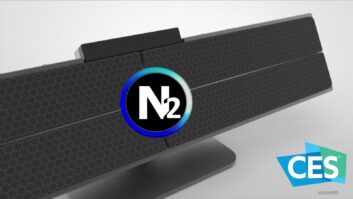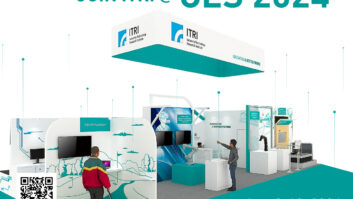There’s more than one way to make a distributed-audio system. Just ask Audio Design Associates (ADA), The B&W Group, IntelliNet, Russound and technology developer Ucentric Systems.
At CES, ADA joined a small group of suppliers offering multi-zone, multi-source A/V receivers that serve as the hub of a custom-installed distributed-A/V system. The B&W Group, parent of such audio brands as Rotel and Bowers & Wilkins, launched the i-Command brand to market a system that integrates the control of multiple home subsystems, including an i-Command distributed-audio system, over its own Ethernet network.
For its part, Ucentric announced that in a trial with cable operator Comcast, a Samsung-built DVR would distribute music, not just recorded TV programs, around the house over standard coaxial cable to audio and video components equipped with Ucentric’s thin clients.
ADA’s HTR-2400 A/V receiver features the ability to simultaneously power a 7.1-channel home theater and an eight-source, eight-zone distributed-audio system, which can be controlled from the company’s existing assortment of CAT-5-connected in-wall keypads. The 24×100-watt receiver ships in the third quarter at a suggested $9,900. Keypads, some with alphanumeric display, start at $250 each.
The ADA receiver features built-in XM Satellite Radio tuner, AM/FM tuner, digital amplification, composite-video switching and distribution for the entire home, Dolby Digital EX and DTS ES.
Other suppliers with multi-source, multi-zone receivers include Niles, Sonance and SpeakerCraft. Audio Access showed its first such model at the CEDIA Expo.
In March, i-Command plans to ship its i-Command Integrated Control System, which uses its own Ethernet network to centrally control multiple home subsystems, including lighting and motorized drapes but not security, from a wireless $3,500-suggested tablet PC or from $600-suggested i-Command in-wall keypads. The tablet PC incorporates wireless 802.11b.
The subsystems, including A/V components, plug into the Ethernet network through outboard black boxes about the size of a deck of cards. One type of black box, the $300-suggested i-Node, connects to the RS-232 ports of the attached components and to in-wall Ethernet ports.
Devices without RS-232 ports can be connected to the Ethernet via a $600 ir-Node black box, which emits IR commands to devices such as VCRs. An ir-Node can capture or download IR codes for any IR device.
The RS-232-equipped i-Nodes are preprogrammed with a suite of commands for a variety of subsystems and devices.
The system utilizes the stability and economies of scale of browser-based IP technology and the Ethernet to reduce costs, deliver a system that doesn’t require programming skills demanded by competing systems, and minimize profit-robbing callbacks, said B&W Group chairman Joe Atkins.
“This is a nice match with the B&W Group’s typical A/V retailers, who need an installer-friendly, user-friendly system,” he said.
The i-Command Powered Audio Matrix, a four-zone 8×40-watt audio-distribution amp/preamp/controller, also taps into the Ethernet to deliver multi-zone audio control through the in-wall keypads or wireless tablet PC. Audio itself, however, isn’t distributed over the Ethernet. Additional Audio Matrix components can be daisy-chained to increase the number of audio zones.
The Audio Matrix is also the Ethernet hub for the i-Command system. The Matrix delivers power to the keypads and black boxes and provides Ethernet connectivity for all subsystems.
The i-Command system isn’t the B&W Group’s first entry into distributed-audio systems. Through Bowers & Wilkins, the group marketed the CASA distributed-audio system, which was phased out in 2003. The group’s Rotel brand offers distributed-audio 6- and 8-channel amps. Products from Rotel and Classe, another group brand, also feature RS-232 control.
For its part, Maynard, Mass.-based Ucentric has added music distribution to an A/V-networking trial already underway by cable-system operator Comcast in the Philadelphia area. The trial uses a Samsung-made multi-TV PVR whose video content can be accessed from multiple TVs in a house if the TVs are equipped with an outboard Ucentric thin client. The device also discovers music stored on a networked PC and distributes the music to stereo systems equipped with a thin client.
To distribute content, the system uses an Ethernet network or HPNA (Home Phone Networking Alliance) technology over coaxial cable.
For its part, IntelliNet leverages the economies of scale of Web and Ethernet technology in its RS3000 distributed-audio system, which sends control signals — but not audio — over a home’s Ethernet network. It can be programmed and controlled through Web-based devices such as wireless Web pads and laptops.
At CES, Intellinet launched the Ethernet-connected three-zone MS1 hard-disc audio server, which can be connected to the RS3000 system. The $3,199 250GB device, due in April, rips and plays back music in the MP3, Ogg Vorbis, WAV, and Flac formats. Flac is an open-source 2:1 lossless-compression codec, whereas MP3 and Ogg Vorbis are lossy perceptual coding technologies. It also transfers and stores JPEG and PNG images from an Ethernet-connected PC for viewing on a TV screen.
The server also connects to other brands of distributed-audio systems via IR and RS-232 ports.
The system includes a Personal Media Assistant feature that learns the user’s listening habits and automatically selects songs for playback at certain times of the day or at events such as parties. The device will display the names of the songs it has in mind for the next hour.
To deliver the highest compressed-music sound quality, the device automatically creates an MP3 and Flac version of the same song, and as the drive nears capacity, it automatically discards the MP3 versions of the least-played songs
Intellinet’s sister company, Russound, also launched a three-zone music server, the SMS3 with 160GB hard-disk drive. It’s due in the spring at a suggested $2,499.
Russound’s 1.75-inch-tall server features a CD drive to rip music, plus the ability to store songs transferred from an Ethernet-connected PC. The server will also store JPEG images transferred from the networked PC or from a CD. It rips and stores in MP3, Ogg Vorbis, and WAV audio formats and accesses the Gracenote and Muze databases to automatically retrieve title information and cover art for display on a connected TV and on Russound in-wall keypads.
It also comes with the Personal Media Assistant feature available in the Intellisound server.
The SMS3 integrates with various brands of distributed-audio systems via IR, RS-232, and Russound’s RNET connections.













